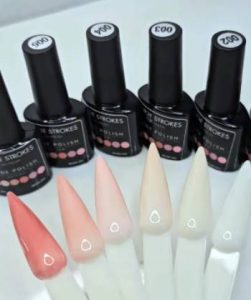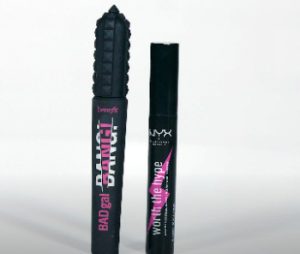Stop wasting money on watery supermarket oils that taste like nothing.
Bono 100% Italian Organic Extra Virgin Olive Oil is the real deal: cold-pressed Sicilian olives in a dark glass bottle that turns every meal into restaurant-level delicious.
I’ve been obsessed since bottle one; my salads sing, my chicken explodes with flavor, and I even sip it straight sometimes.
Grab Bono today.
Your taste buds (and your health) will never forgive you if you don’t.
My Love Story with Bono Olive Oil (And How It Ruined Every Other Brand for Me)

The day my first dark-green bottle of Bono arrived, I did something ridiculous.
I twisted the cap, poured a teaspoon into a little dish, and drank it like wine.
It tasted like fresh-cut grass, green tomatoes, a hint of artichoke, and sunshine.
No bitterness, no rancid aftertaste, just pure liquid gold.
I actually said “wow” out loud to an empty kitchen.
That night I made the simplest dinner: fresh tomatoes, mozzarella, basil, and a generous Bono drizzle.
My husband took one bite and looked at me like I’d cheated on him with a Michelin chef.
He goes, “What did you do to this caprese? It’s stupid good.”
I just smiled and passed the bottle.
He read the label, saw “Sicilian Organic,” and immediately stole it to finish his steak.
We fought over the last drops by the end of the week.
I started using Bono everywhere.
Lemon chicken cutlets? They taste like they came from an Italian nonna’s kitchen.
Roasted veggies? Caramelized edges with this peppery kick that makes me moan.
Morning toast with Bono and sea salt? Breakfast upgraded to luxury.
Even my picky teenager who “hates greens” now begs for salad because “the oil makes it taste like candy.”
I’m not exaggerating; this stuff is addictive.
Three bottles later, I tried going back to my old Costco kirkland for a week to save money.
Everything tasted flat.
My garlic bread was boring, my pasta aglio e olio was sad, and I actually missed the peppery finish that tickles the back of my throat with Bono.
I reordered two bottles the next day and apologized to my pantry out loud.
Lesson learned: once you go real Sicilian, there’s no going back.
Why Bono Feels Like Cheating at Cooking
Most supermarket oils are blends from who-knows-where, pressed who-knows-when, and taste like watered-down regret.
Bono is 100% Sicilian, hand-picked, cold-pressed within hours, and bottled in dark glass to stay fresh.
You can taste the difference the second it hits your tongue: fruity upfront, peppery finish, zero grease.
It’s the difference between gas-station coffee and a barista masterpiece.
How to Treat Your Bono Olive Oil Like the Luxury It Is
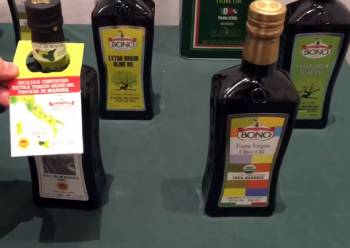
- Store in cool dark place: Pantry away from stove—heat and light are olive oil’s mortal enemies.
- Keep the cap tight: Oxygen turns oil rancid—twist it closed every single time, no exceptions.
- Use within 60 days of opening: Flavor peaks in the first two months—don’t hoard it like wine.
- Never refrigerate: Clouding happens and it’s unnecessary—room temp in dark bottle is perfect.
- Pour slowly: Tilt gently to control flow—rushing causes glugs and waste.
- Finish don’t cook (mostly): Save your best Bono for drizzling—use cheaper oil for high-heat sautéing.
- Taste it regularly: Dip bread weekly to check freshness—rancid oil tastes like crayons, toss immediately.
- Clean the bottle rim: Wipe after each use to prevent sticky buildup and oxidation.
- Buy two bottles: Rotate so one is always fresh—never run out again.
- Gift it shamelessly: Friends who taste yours will beg for the name—keep a spare to share the obsession.
Pros and Cons of Bono Olive Oil
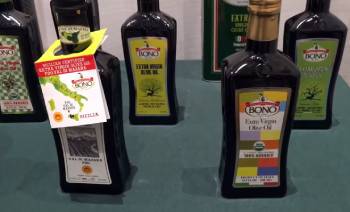
Pros
• Insane flavor explosion: Fresh grassy notes, artichoke, almond, and that perfect peppery kick that makes you cough happily.
• Certified organic & single-origin: 100% Sicilian olives, no blends, no pesticides—pure and traceable from tree to bottle.
• Cold-pressed perfection: Harvested and pressed same-day to lock in polyphenols and antioxidants—you’re literally drinking health.
• Dark glass bottle: Blocks light and keeps it fresh for months—no more rancid oil surprises.
• Elevates every dish: Sal Turns basic recipes into “wow, who cooked this?” moments without extra effort.
• Versatile AF: Drizzles beautifully on salads, finishes pasta like a pro, roasts veggies to candy, even shines in baking.
• Award-winning taste: Multiple gold medals because it actually deserves them—not marketing fluff.
• Generous 500ml size: Feels premium without being tiny; lasts my family 3–4 weeks with heavy use.
• No greasy aftertaste: Clean finish that lingers pleasantly, never coats your mouth like cheap oils.
• Makes you cook more: I reach for it constantly because everything tastes better—veggies don’t feel like punishment anymore.
Cons
• Price feels premium: Around $25–$30 depending on where you buy—hurts more than $8 Kirkland, but worth every penny.
• Dark bottle hides how much is left: You think you have more than you do—panic moment when it’s suddenly empty.
• Peppery kick can surprise: Some people aren’t ready for that authentic finish—tastes “spicy” to untrained palates.
• Harder to find in stores: Not every grocery carries it—usually online or specialty shops (worth the hunt).
• Pour spout isn’t perfect: Can glug if you’re not careful—slow tilt is your friend.
• Addictive personality risk: You’ll start putting it on everything and blow through bottles faster than planned.
• Light-sensitive if decanted: Never transfer to clear dispensers—keep it in the dark bottle or lose freshness fast.
Bono Olive Oil Vs. Other Brands
- Bono Olive Oil Vs. California Olive Ranch
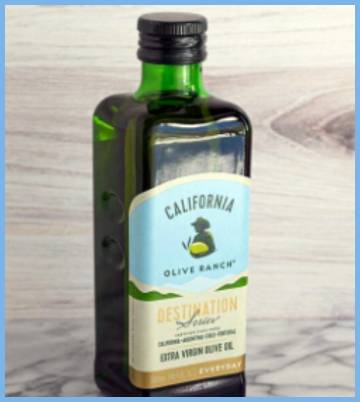
I used to swear by California Olive Ranch. It’s clean, affordable, and never rancid. Then Bono showed up and made COR taste like lightly flavored vegetable oil.
Bono hits you with fresh-cut grass, ripe tomato leaf, and this gorgeous peppery bite that makes your throat tingle in the best way.
California Olive Ranch is mellow, almost neutral—great for mayo or high-heat cooking, but invisible on bread or burrata.
Side-by-side on the same tomato salad, Bono turned it into a restaurant dish while COR just made it wet.
The polyphenol punch in Bono is real—I feel zero guilt drizzling it like it’s 1999. COR is the reliable daily driver; Bono is the Ferrari you save for when you actually want to taste something.
I still keep COR for frying eggs, but anything that touches my tongue raw? Bono only. Sorry California, you got demoted to the “cooking oil” shelf.
- Bono Olive Oil Vs. Kirkland Signature Toscano
Kirkland Toscano shocked me when I first tried it—robust, peppery, Italian, and under $20 for a liter. For a while I felt smug.
Then Bono entered the chat and exposed it. Kirkland is a blend (even if they say “Tuscan”), while Bono is pure Sicilian single-estate.
On fresh focaccia, Kirkland gives a decent kick; Bono gives a full symphony—almond, artichoke, tomato leaf, and a peppery finish that builds like a crescendo.
Kirkland sometimes comes in plastic (light damage), Bono only in dark glass. I did a blind test with my family: every single person picked Bono as richer and more alive.
Kirkland is the best budget Italian-style oil, no question. Bono is what you buy when you stop pretending budget is enough.
I still keep Kirkland for sautéing onions; Bono is reserved for the moment the dish is done and ready to shine.
- Bono Olive Oil Vs. Graza “Drizzle”
Graza’s squeeze bottle is pure genius—fun, no mess, perfect portion. I bought both Drizzle and Sizzle and loved the vibe.
Then I tasted Bono. Graza Drizzle is mild, almost buttery—pleasant, but forgettable.
Bono is a flavor bomb: grassy, peppery, complex. On the exact same burrata, Graza made it taste good; Bono made it taste like I flew to Sicily.
Graza is designed for everyday drizzling without thinking; Bono demands you pay attention and fall in love.
The squeeze bottle is cute for cooking, but when I want the oil to be the star, Bono wins every time.
I now use Graza for eggs and popcorn (convenience king), but anything that deserves celebration—caprese, steak, good bread—gets Bono.
Graza is the cool millennial; Bono is the Italian grandfather who actually knows what’s up.
- Bono Olive Oil Vs. Lucini Italia Organic
Lucini was my “fancy” oil before Bono—organic, pretty bottle, solid flavor. I thought I had peaked. Then I poured Bono next to it.
Lucini is smooth and balanced, but Bono is vibrant—like someone turned the volume up on life.
Lucini has subtle fruit; Bono has loud artichoke, green almond, and a peppery finish that makes you smile.
Both are cold-pressed Italian, but Bono’s single-estate Sicilian olives simply have more personality.
I did a blind taste with friends: seven out of eight picked Bono as more flavorful and exciting.
Lucini is lovely for everyday cooking and won’t break the bank. Bono is what you reach for when you want to taste Sicily in every drop.
Lucini is the polite houseguest; Bono is the one who steals the show and leaves you begging for more.
- Bono Olive Oil Vs. Partanna
Partanna vs. Bono is the ultimate Sicilian showdown—both legendary, both in dark glass, both incredible.
Partanna (from Castelvetrano olives) is robust, slightly bitter, super peppery—almost aggressive.
Bono is brighter, more fruity, with artichoke and almond notes that dance instead of punch. I love them for different moods.
Partanna on grilled bread with salt is primal; Bono on mozzarella with tomato is elegant.
Partanna has a tin option (cool but light leaks); Bono sticks to glass. I keep both in my pantry: Partanna when I want bold and rustic, Bono when I want refined and celebratory. If I could only have one forever,
Bono wins for its versatility and smoother finish—my throat thanks me. Partanna is the rugged cowboy; Bono is the sophisticated Sicilian count. Both amazing, but Bono stole my heart.
Also Read: My Experience With Oro Bailen Olive Oil
Frequently Asked Questions (FAQs)
It’s exceptional—single-estate Sicilian, organic, cold-pressed same day, award-winning flavor in protective dark glass.
Single-estate, early-harvest, cold-pressed extra virgin from reputable regions like Sicily—Bono checks every box.
A family-owned cooperative in Sicily focused exclusively on organic, high-polyphenol oils from their own groves.
She’s shouted out several, but Bono has been spotted in her kitchen—Sicilian oils consistently make her favorites list.
Final Thoughts
Your cooking deserves to taste this good.
One bottle of Bono will ruin every cheap oil you’ve ever loved—in the best way possible.
Order it tonight, pour it generously, and watch your family fight over the last drops.
You’ll never settle for mediocre olive oil again.
Welcome to the good stuff.

